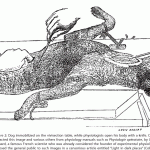15 November, 2017
Between 1849 and 1910 Brazil experienced a really unusual and terrible wave of epidemics. First, the yellow fever arrived. In early to mid 1800s, cholera came. Less severely than the others, the bubonic plague also affected Brazil at that time. Smallpox was terrible problem, worse than the others. However, during that period, endemic diseases, such as tuberculosis and tetanus killed far more.

Jean Baptiste Debret, Voyage Pittoresque et Historique au Bresil (Paris,1834-39), vol. 2, plate 46, p. 142. (Copy in the John Carter Brown Library at Brown University).
In the article “A triumphant decline? Tetanus among slaves and freeborn in Brazil (HCSM. vol.19 supl.1 Dec. 2012), Ian Read associate professor at Soka University, California, traces the history of this disease in nineteenth-century Brazil.
Using archival sources from across the Empire and early Republic, this article argues tetanus disproportionately killed the enslaved population, but gradually diminished in virulence for nearly all groups across the country by the second half of the 1800s.
See in Manguinhos:
Tetanus among slaves and freeborn in Brazil – Ian Read, from Soka University, talks about tetanus in 19th century Brazil. According to him, the story about health and medicine is needed to understand the transition from empire to the republic.
Slave mortality during the cholera epidemic in Rio de Janeiro (1855-1856): a preliminary analysis. Kodama, Kaori et al. Hist. cienc. saude-Manguinhos, Dez 2012, vol.19, suppl.1.









